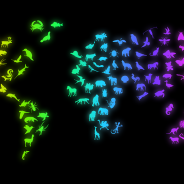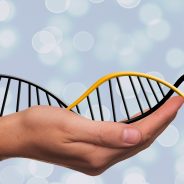Molecular
Species Identification

DNA is present in the cells of every living thing, from bacteria to us. Certain genes that perform basic cellular functions are common to all of these organisms and can be used for comparison at the molecular level. The genetic distances of the selected marker regions on these genes can be examined for specimen identification and to obtain information on phylogenetic and evolutionary relationships at individual, population and species ranks. DNA barcoding, which is currently the most common method for molecular identification, is based on the selection of universal marker regions for animals/plants and also provides significant contributions to the field of taxonomy.
Environmental DNA
Metabarcoding

Dead cells or the eggs, sperm, mucus, saliva, faeces, blood and other secretions of living cells leave trace amounts of DNA in the environment. Environmental DNA (eDNA) metabarcoding methods are based on the detection of these particles, thanks to the development of DNA sequencing technologies, and are increasingly being used in a variety of fields such as biodiversity and biomass assessments, revealing species distributions and community compositions, identification of endangered/invasive species or disease vectors.
Molecular Ecology

Molecular ecology, a field of evolutionary biology, is based on the use of phylogenetic, population genetics and genomic methods to study the ecological basis of the origins and contemporary conditions of species. It is closely related with the field of conservation biology as it helps understanding the genetic basis of adaptation of organisms to complex environmental conditions and related mechanisms as gene flow, migration and hybridization.
Molecular Evolution

Studies on molecular evolution examine the inheritance of changes in DNA, caused by mutation and recombination, through genetic drift and natural selection. Mostly, studies on organisms with high reproductive rates provide an understanding of evolutionary mechanisms.
Ancient DNA

DNA obtained from damaged tissues or other biological materials is called “ancient DNA”. It is one of the most commonly used method in studies on human evolution in recent years and can also be isolated from fossils and remainings of other organisms. Thus, it establishes a bridge between paleoecology and genetics by providing critical information on species identification, distribution and evolution.

